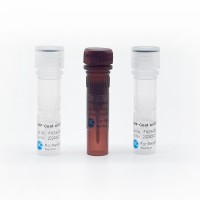Intracellular Whole-Cell Patch-Clamp Recordings of Cortical Neurons in Awake Head-Restrained Mice
互联网
494
Patch‐Clamp in Awake Mice? Membrane potential dynamics resulting from the integration of thousands of synaptic inputs and
intrinsic membrane properties underlie the generation of action potential in neurons of the central nervous system. The investigation
of membrane potential dynamics is, therefore, of major importance to the understanding of brain function. This level of neuronal
activity can only be assessed by measuring differences of potential between the inside and the outside of a neuron, i.e.,
intracellular recording. In mammals, this approach has been so far mainly restricted to reduced preparations in vitro and
more recently to the intact brain in anesthetized animals. Such preparations do not reproduce the complexity and the diversity
of the brain activities observed in behaving animals and are, therefore, of limited interest to the understanding of complex
brain processing and cognitive functions. Recently, we have developed an approach that enables intracellular recordings of
cortical neurons in awake behaving mice. The mechanical stability of the brain being the main technical issue, it has been
successfully overcome by (1) using “blind” whole-cell patch-clamp technique conferring higher stability in the initial phase
of the recording, (2) implanting mice with light metal posts that enable painless and stable fixation of the head, (3) habituating
the animal to avoid large and brisk body movements during the recording session, and (4) reducing the size of the craniotomy
to minimal to prevent large brain pulsations and edema. This technique has been successfully applied to the investigation
of cortical sensory processing during active sensing in the mouse whisker system and has been expanded to simultaneous double
intracellular recordings or combined with other recording techniques, such as local field potentials or two-photon microscopy.









